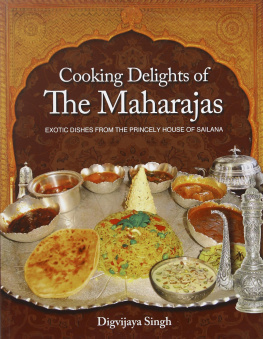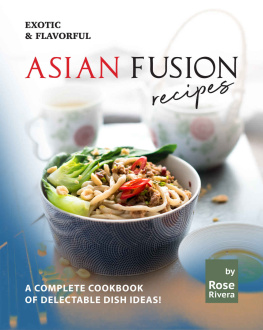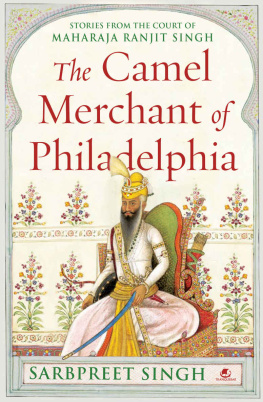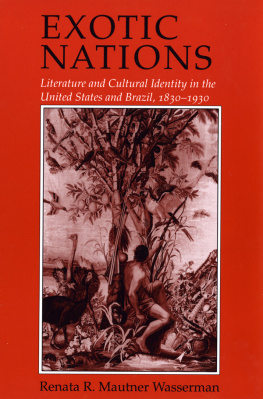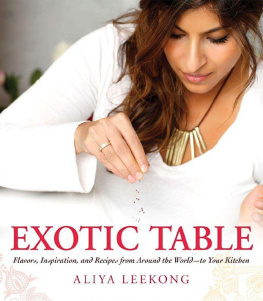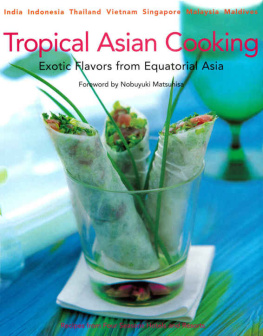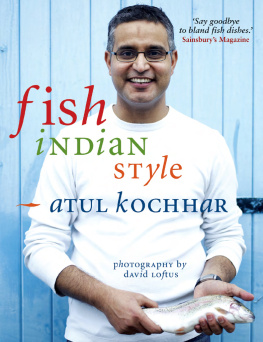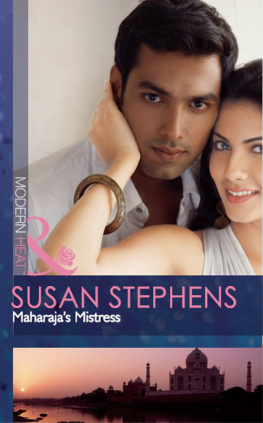
BOOK CREATED BY GOURMET ARTS
8 Shreeniketan
14, M. Karve Marg, Bombay 400 020

PUBLISHED BY
Vakils, Feffer & Simons Ltd.
Hague Building, 9 Sprott Road, Bombay 400 038
This book is
compiled and gifted to book-lovers by
The Rddler
Copyright
First Edition : 1982
Second Edition : 1984
Third Edition : 1988
Fourth Edition . 1990
Fifth Edition: 1992
Sixth Edition: 1994
Copyright 1982 by Vakils, Feffer & Simons Ltd.
Hague Building, 9 Sprott Road,
Bombay 400 038
All Rights Reserved
Price : Rs. 125/
Published by Mrs. Jean Trindade for Vakils, Feffer & Simons Ltd.
Hague Building, 9 Sprott Road, Ballard Estate,
Bombay 400 038.
Designed by Rah.
Printed by Arun K. Mehta at Vakil & Sons Ltd.
Vakils House, 18 Ballard Estate,
Bombay 400 038.
ePUB by Rddler.
Designed by Vakils Art Department
Photographs by D. F. Poonawala & Rajendra Kumar Singh
Dedication


To the memory of my Father
His Late Highness
Raja Sir Dilip Singhji K.C.I.E.
of Sailana this book is respectfully dedicated.

Acknowledgement
I am most grateful to
Captain Nagin S. Shah
Prince Shivaji Rao Holkar
Princess Shalini Devi Holkar
of Indore
Shri Rajendra Kumar Singhji
of Indore
for not only inspiring me to write
this book but constantly guiding me,
in every detail
in compiling the entire volume.
Without their encouragement
and co-operation this book
would not have materialised.

Foreword
It is a pleasure to write this foreword for the Maharaja Saheb of Sailanas book on Indian cuisine particularly as he is most competent to write such a book as he is not only a gourmet but a superb cook.
The author cooks for pleasure and with his vast experience and knowledge of cooking I feel sure that those who buy this book will be introduced to many new and delicious Indian dishes.
Bon Apetit.
Gayatri Devi
Her Highness Rajmata of Jaipur
Content
Preface
R ecently, there has been a flood of Indian cook books. While in their own way all are good, I feel, they are aimed at the amateur cook, the busy housewife, who desires to put up a good meal in a hurry. e prices an general pressures of life have done their own damage. Time is scarce and so is leisure. Everyone seeks short-cuts, thereby reducing a precious fine art to the level of plain belly filling. As a result the recipes have become simplified and also to an extent westernised.
In India, with our ancient heritage and many cultures have inherited a variety of cuisine, incomparable and unsurpassable. The Persian School of cooking has had the greatest impact on our cooking. The Maharajas, I know, invariably were connoisseurs of good food. Fine kitchens were maintained and the best cooks sought. Sometimes there was a cook for each recipe. Among them it was a status symbol as to whose table provided the most unusual and luxurious fare. The cooks kept their recipes jealously guarded secrets and the precious formulas often went from father to son. Those not passed on are lost forever.
My father, His Highness Raja Sir Dilip Singhji, K.C.I.E. of Sailana foresaw this eighty years ago and began collecting recipes. It was an all consuming interest which he brought to scientific perfection. He took great pains over each recipe, refining and experimenting again and again till he brought it to perfection. He called cooks from all over to learn from them. He had ancient recipe books in Sanskrit, Urdu and Persian translated. The recipes in this book are the result of his untiring research. I have also maintained and continued this culinary research and am pleased to offer, to those discerning lovers of good food, some of the recipes from our collection.
The masalas (spices) are the same as used all over; their quantity and the order in which they are used make all the difference. It is absolutely essential to carefully measure the ingredients and follow the recipes faithfully. Without this, perfection is impossible.
The recipes given here are in their pure form. This book is not for the novice. I have taken for granted that anyone attempting to cook from these has the basic knowledge of cooking. I have however explained certain basic terms and methods which are often misunderstood. It has been quite difficult at times to explain certain Indian terms and methods in English. I have done my best and I keep myself always open for any suggestions.
The dishes given here should delight the palates of the severest critics and gourmets. Before bringing out this book I felt that if such a step is not taken, in a decade or so, the fine art of Indian cooking would vanish beyond revival.
Digvijaya Singh
The Palace Sailana M.P.
Helpful Hints
To enable you to follow these recipes correctly I feel certain classifications of terms and methods are necessary. I am giving below some notes on methods and terms most commonly misunderstood:
Pans
Except for boiling, stainless steel and aluminium pans are to be avoided. Heavy-bottomed brass pans are the best for Indian cooking. All the pans should have a properly fitted lid.


